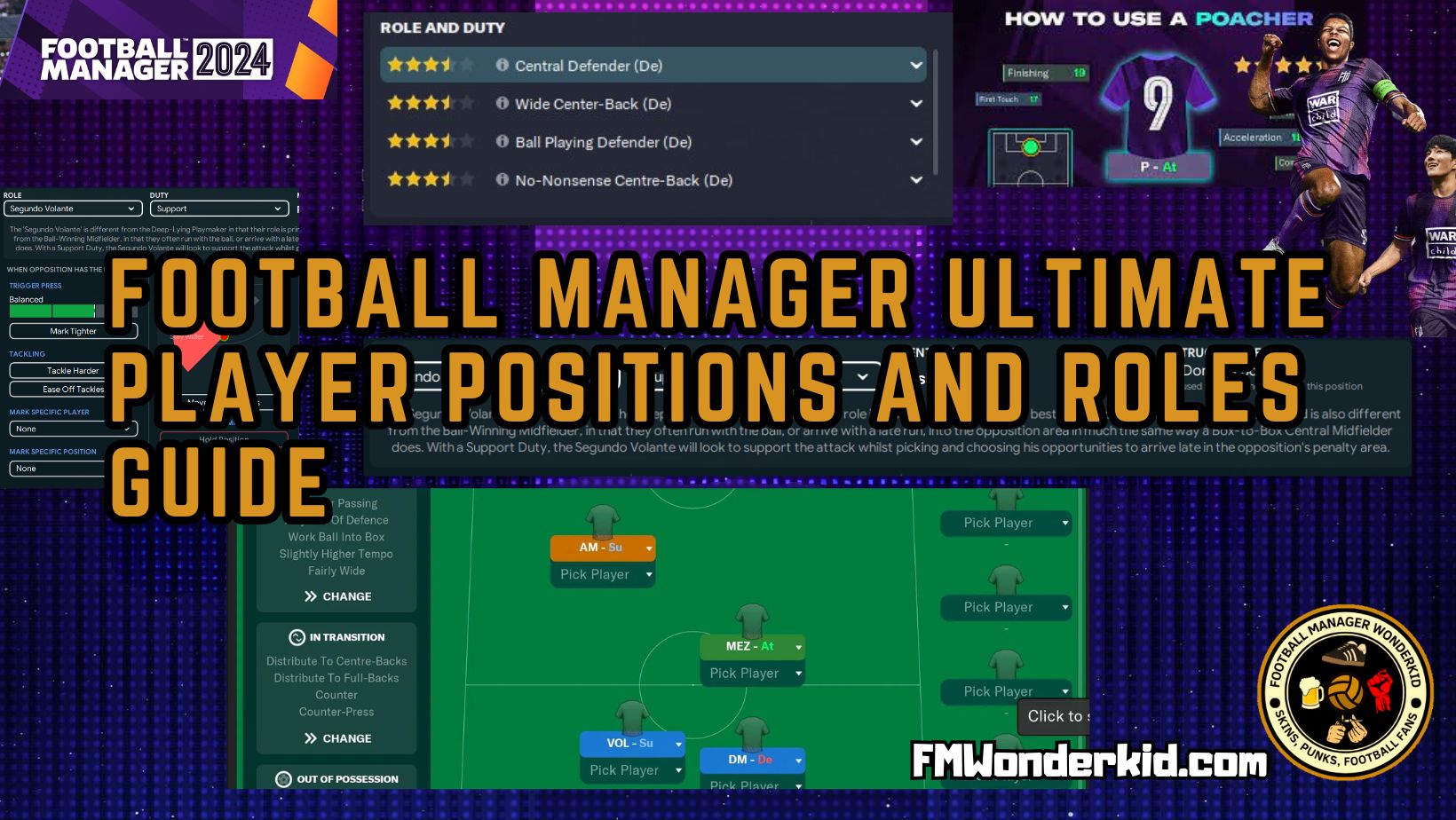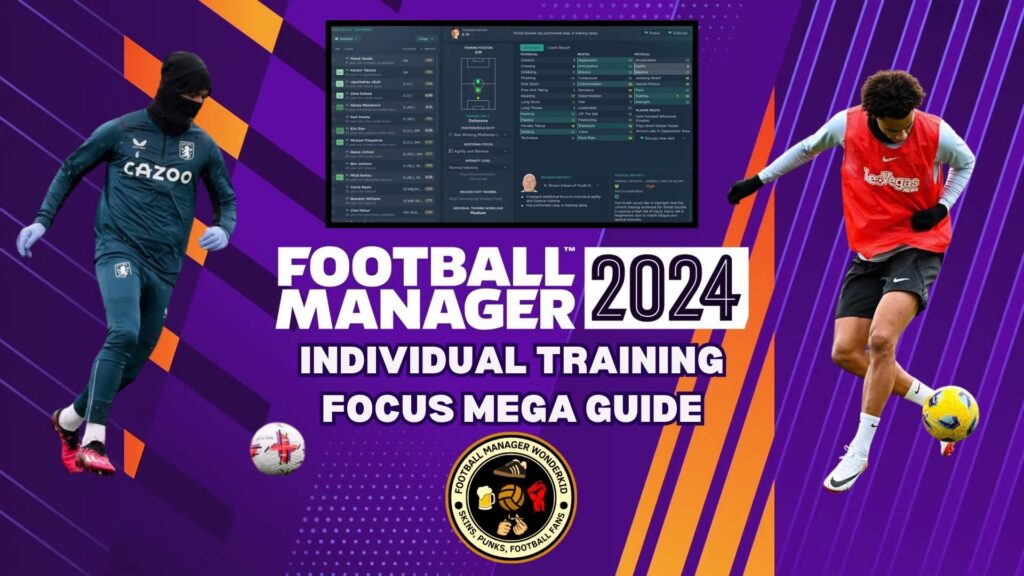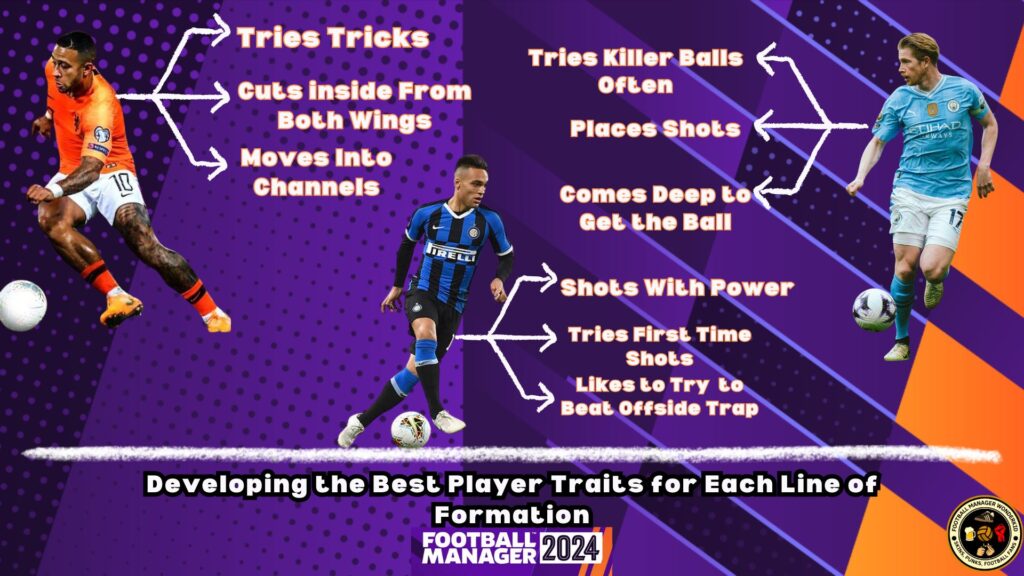Understanding player roles in any version of FMs helps you build a great team. Let’s look at the latest, FM24/25 player roles and how you can maximally utilize them.
Key Points: FM Player Roles
- Goalkeeper Roles: Traditional Goalkeeper and Sweeper Keeper
- Match roles to player strengths for best performance
- Balance your team with diverse roles
- Experiment with different role combinations
- Traditional Goalkeeper: Focuses on shot-stopping and organizing defense
- Sweeper Keeper: Plays high defensive line and initiates counter-attacks
- Role selection impacts team tactics and playing style
- Goalkeeper role influences build-up play and defensive strategy
- Consider player attributes when assigning roles
- Adapt roles to suit your formation and tactics
- Use training to develop players in specific roles
- Monitor player performance in assigned roles regularly
Goalkeeper Roles: The Last Line of Defense
In FM24, goalkeepers do more than just stop shots. They can help start attacks too. There are two main goalkeeper roles:
1. Traditional Goalkeeper: This keeper focuses on saving shots and organizing the defense. They’re great if you want a solid option in goal. Key skills for this role include reflexes, positioning, and handling.
2. Sweeper Keeper: This modern role is good for teams that like to play a high defensive line. Sweeper keepers come off their line to clear danger and can even start counter-attacks with their passing. They need good reflexes, one-on-ones, and rushing-out abilities.
When choosing a goalkeeper role, think about how your team plays. If you like to press high, a Sweeper Keeper might be best. For a more defensive team, use a Traditional Goalkeeper. Look at your goalkeeper’s strengths and weaknesses when deciding.
| Fm24 Player Roles | Example Players |
|---|---|
| Sweeper Keeper | Manuel Neuer (Bayern Munich) |
| Traditional Goalie | David De Gea (Fiorentina) |
Defensive Roles: Building a Solid Foundation
Your defense is super important. FM24 has many defensive roles for different tactics:
Click for more below ↓ ↓ ↓
Centre-Back Roles
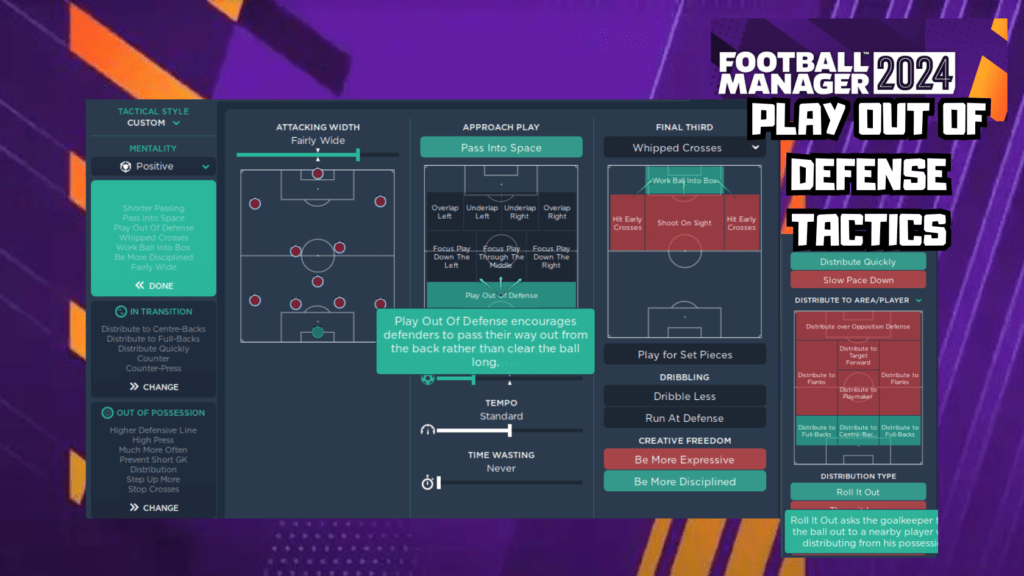
1. Central Defender: The basic defender. They focus on marking strikers and clearing danger. Key skills include marking, tackling, and strength.
2. Ball-Playing Defender: Good for teams that like to pass from the back. These defenders have good passing skills and vision, plus solid defensive skills.
3. Libero: A rare but cool role. Liberos can move into midfield when your team has the ball. They need both defensive skills and passing ability.
4. No-Nonsense Centre-Back: Perfect for teams that just want defenders to defend. They’ll clear the ball without trying fancy stuff. Strength, heading, and tackling are important for this role.
5. Wide Centre-Back: Used in a back three, these defenders provide width and can help the midfield. They need good positioning and stamina.
| Fm24 Player Roles | Example Players |
|---|---|
| Ball Playing Defender | Ruben Dias (Man. City) |
| No-Nonsense Center Back | Virgil van Dijk (Liverpool) |
| Limited Defender | Kalidou Koulibaly (Al-Hilal) |
| Wide Centre Back | Joško Gvardiol (Man. City) |
Full-Back and Wing-Back Roles
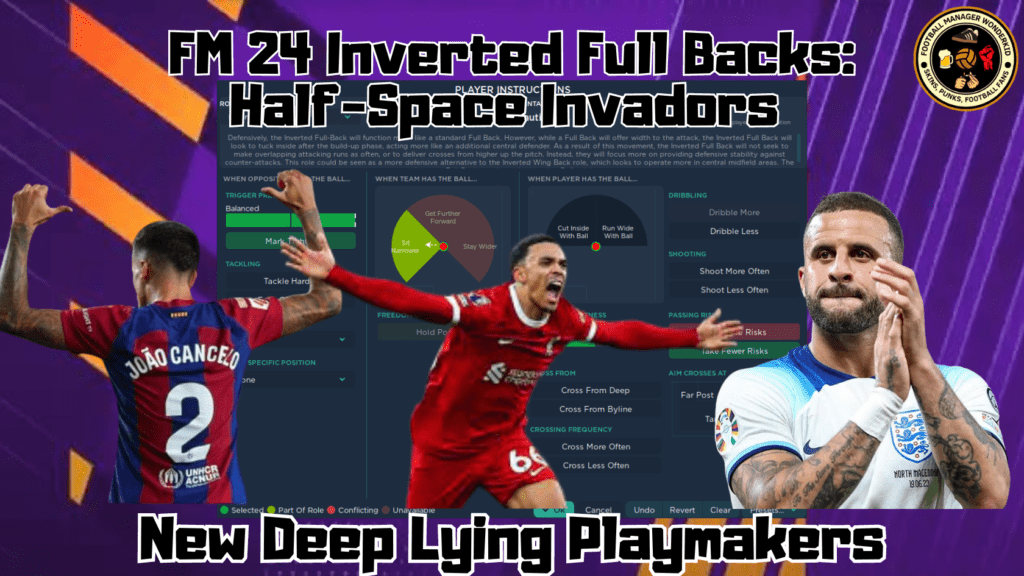
1. Full-Back: Balances defense and attack. They’ll help the wingers but also defend. Key skills include tackling, stamina, and crossing.
2. Wing-Back: More attacking than full-backs. They’re important for teams that want width in attack. They need high stamina, crossing, and dribbling skills.
3. Complete Wing-Back: The do-it-all player. They can defend, attack, and even cut inside to create chances. They need many skills, including stamina, crossing, dribbling, and tackling.
4. Inverted Wing-Back: These players move inside to help control the midfield when your team has the ball. They need good passing and positioning skills.
5. No-Nonsense Full-Back: Like the center-back version, these players focus only on defending. Tackling, marking, and positioning are key.
6. Inverted Full-Back: A special role where the full-back moves into central areas to create overloads. They need good passing and an understanding of tactics.
| Fm24 Player Roles | Example Players |
|---|---|
| Conventional Full Back | Kieran Trippier (Newcastle) |
| Inverted Full-Back | Joshua Kimmich (Bayern Munchen) |
| No-Nonsense Full Back | Lucas Hernandez (PSG) |
| Complete Wing-Back | Achraf Hakimi (PSG) |
| Inverted Wing-Back | TAA (Barcelona) |
When picking defensive roles, think about how you want to play. If you want to keep the ball a lot, Ball-Playing Defenders and Inverted Wing-Backs can help. For a more direct style, No-Nonsense defenders might be better. Always make sure your players have the right skills for their roles.
Midfield Roles: Controlling the Game
The midfield is where games are often won or lost. FM24 has many midfield roles to help you control the middle of the field:
Defensive Midfielder Roles
1. Defensive Midfielder: Sits in front of the defense, stopping attacks and starting your own. Key skills include tackling, positioning, and passing.
2. Deep-Lying Playmaker: The quarterback of your team. They control the game from deep positions. Vision, passing, and technique are crucial.
3. Regista: A deep-lying playmaker with more freedom to create. Vision, passing, and technique are essential.
4. Anchor Man: Stays in position to protect the defense. Great for teams that want extra safety at the back. Positioning, marking, and tackling are important.
5. Half-Back: Drops between the center-backs when your team has the ball, letting the full-backs move forward. They need good positioning and passing skills.
6. Segundo Volante: Combines defending with late runs into the box. They need a mix of defensive and attacking skills.
Central Midfielder Roles
1. Central Midfielder: A player who can do a bit of everything. They need a mix of different skills.
2. Box-to-Box Midfielder: Runs all over the field, helping in attack and defense. Stamina, work rate, and passing are crucial.
3. Mezzala: Plays in the spaces between positions, attacking from midfield. They need good dribbling, passing, and movement.
4. Carrilero: Acts like a shuttle, connecting defense and attack. Stamina, work rate, and passing are key.
5. Ball-Winning Midfielder: A tough player who focuses on getting the ball back. Tackling, work rate, and stamina are key.
6. Roaming Playmaker: Can move around the field to create chances. They need excellent vision, passing, and movement.
Defensive Midfielder Roles
| FM24 Player Roles | Example Players |
|---|---|
| Defensive Midfielder | Rodri (Man. City) |
| Deep-Lying Playmaker | Marco Verratti (Al-Arabi) |
| Regista | Jorginho (Arsenal) |
| Anchor Man | Casemiro (Manchester United) |
| Half-Back | Declan Rice (Arsenal) |
| Segundo Volante | Federico Valverde (Real Madrid) |
Central Midfielder Roles
| FM24 Player Roles | Example Players |
|---|---|
| Central Midfielder | Frenkie de Jong (Barcelona) |
| Box-to-Box Midfielder | Jude Bellingham (Real Madrid) |
| Mezzala | Nicolo Barella (Inter Milan) |
| Carrilero | N’Golo Kanté (Al-Ittihad) |
| Ball-Winning Midfielder | Joshua Kimmich (Bayern Munich) |
| Roaming Playmaker | Luka Modrić (Real Madrid) |
Attacking Midfielder Roles
1. Advanced Playmaker: The main creative player, operating between the lines. Vision, passing, and technique are crucial.
2. Trequartista: A special player who focuses only on creating and scoring goals. They need excellent technical skills and movement.
3. Enganche: A playmaker who stays in one spot to create attacks. Vision, passing, and technique are key.
4. Shadow Striker: Makes runs from deep to score goals. They need good finishing, movement, and speed.
| FM24 Player Roles | Example Players |
|---|---|
| Advanced Playmaker | Kevin De Bruyne (Man. City) |
| Trequartista | Paulo Dybala (AS Roma) |
| Enganche | Lionel Messi (Inter Miami) |
| Shadow Striker | Bruno Fernandes (Manchester United) |
Your midfield setup depends on how you want to play. A team that likes to keep the ball might use a deep-lying playmaker and an Advanced Playmaker. A more defensive team could use a Ball-Winning Midfielder and a Box-to-Box Midfielder. Always think about how your midfield roles work together and support your overall plan.
Wide Roles: Using Attacking Flanks
Wide players can change games in FM24. Here are the roles you can use on the wings:
1. Wide Midfielder: Balances attack and defense, providing width and support. They need good crossing, stamina, and work rate.
2. Winger: Focuses on beating their defender and crossing the ball. Dribbling, speed, and crossing are key skills.
3. Inverted Winger: Cuts inside to create chances or shoot. They need good dribbling, finishing, and passing skills.
4. Inside Forward: An attacking role that moves inside to score goals. Finishing, dribbling, and movement are crucial.
5. Wide Playmaker: Creates chances from wide areas, often moving inside. Vision, passing, and technique are essential.
6. Defensive Winger: Provides defensive cover while still helping in attack. They need good tackling, work rate, and crossing ability.
7. Raumdeuter: A unique role that focuses on finding and using space. Movement, finishing, and anticipation are key.
| FM24 Player Roles | Example Players |
|---|---|
| Wide Midfielder | Thomas Lemar (Atletico Madrid) |
| Winger | Leroy Sané (Bayern Munich) |
| Inverted Winger | Mohamed Salah (Liverpool) |
| Inside Forward | Vinícius Júnior (Real Madrid) |
| Wide Playmaker | Bernardo Silva (Man. City) |
| Defensive Winger | Bukayo Saka (Arsenal) |
| Raumdeuter | Thomas Müller (Bayern Munich) |
Your choice of wide roles should work well with your strikers and overall playing style. If you have a big Target Man up front, traditional Wingers might work best. For a more fluid system, Inside Forwards or Inverted Wingers could be better. Think about how your wide players work with your full-backs or wing-backs to create a good system.
Striker Roles: Leading the Attack
Your choice of striker can make a big difference. FM24 offers several options:
1. Advanced Forward: An all-round striker who can score and create. They need good finishing, movement, and technique.
2. Complete Forward: The ultimate striker, capable of doing everything. They need a wide range of skills, including finishing, passing, and strength.
3. Target Man: Uses their strength to hold the ball and bring others into the game. Strength, heading, and first touch are crucial.
4. Poacher: Focuses only on getting into scoring positions. Finishing, movement, and anticipation are key.
5. Deep-Lying Forward: Drops back to link play, creating space for others. They need good passing, vision, and teamwork.
6. Pressing Forward: Leads the press from the front, pressuring defenders. Work rate, stamina, and tackling are important.
7. False Nine: Drops into midfield, creating space for attacking midfielders to use. They need excellent passing, vision, and movement.
| FM24 Player Roles | Example Players |
|---|---|
| Advanced Forward | Harry Kane (Bayern Munich) |
| Complete Forward | Robert Lewandowski (Barcelona) |
| Target Man | Olivier Giroud (LA Galaxy) |
| Poacher | Erling Haaland (Man. City) |
| Deep-Lying Forward | Karim Benzema (Al-Ittihad) |
| Pressing Forward | Gabriel Jesus (Arsenal) |
| False Nine | Roberto Firmino (Al-Ahli) |
Your choice of striker role should depend on how you want to play and the players you have. A Target Man works well with crossing tactics, while a False Nine can be good in a possession-based system. Think about how your striker works with your midfielders and wide players to create a good attacking team.
Training and Developing Players for Specific Roles
Click for more below ↓ ↓ ↓
Once you’ve decided on your roles, it’s time to train your players to do well in them:
1. Individual training focus: Use individual training to improve the key skills for each role. For example, focus on passing and vision for a Deep-Lying Playmaker, or finishing and movement for a Poacher.
2. Mentoring for role proficiency: Put young players with experienced pros who are good at the desired role. This can help younger players develop the right mental skills and learn player traits that suit their role.
3. Using player traits to enhance roles: Teach players traits that fit their roles, like “Tries to beat offside trap” for a Poacher or “Plays short simple passes” for a Deep-Lying Playmaker.
Football Manager Player Roles Effective Management
Understanding and using player roles well is key to success in Football Manager 24. Here’s a quick recap:
• Choose roles that fit how you want to play
• Make sure your players have the right skills for their roles
• Try different role combinations
• Use training and mentoring to develop players in their roles
• Regularly check and adjust roles based on how players are doing and what the team needs
• Think about how different roles work together in your chosen formation
• Change your role selections based on your opponents and match situations

